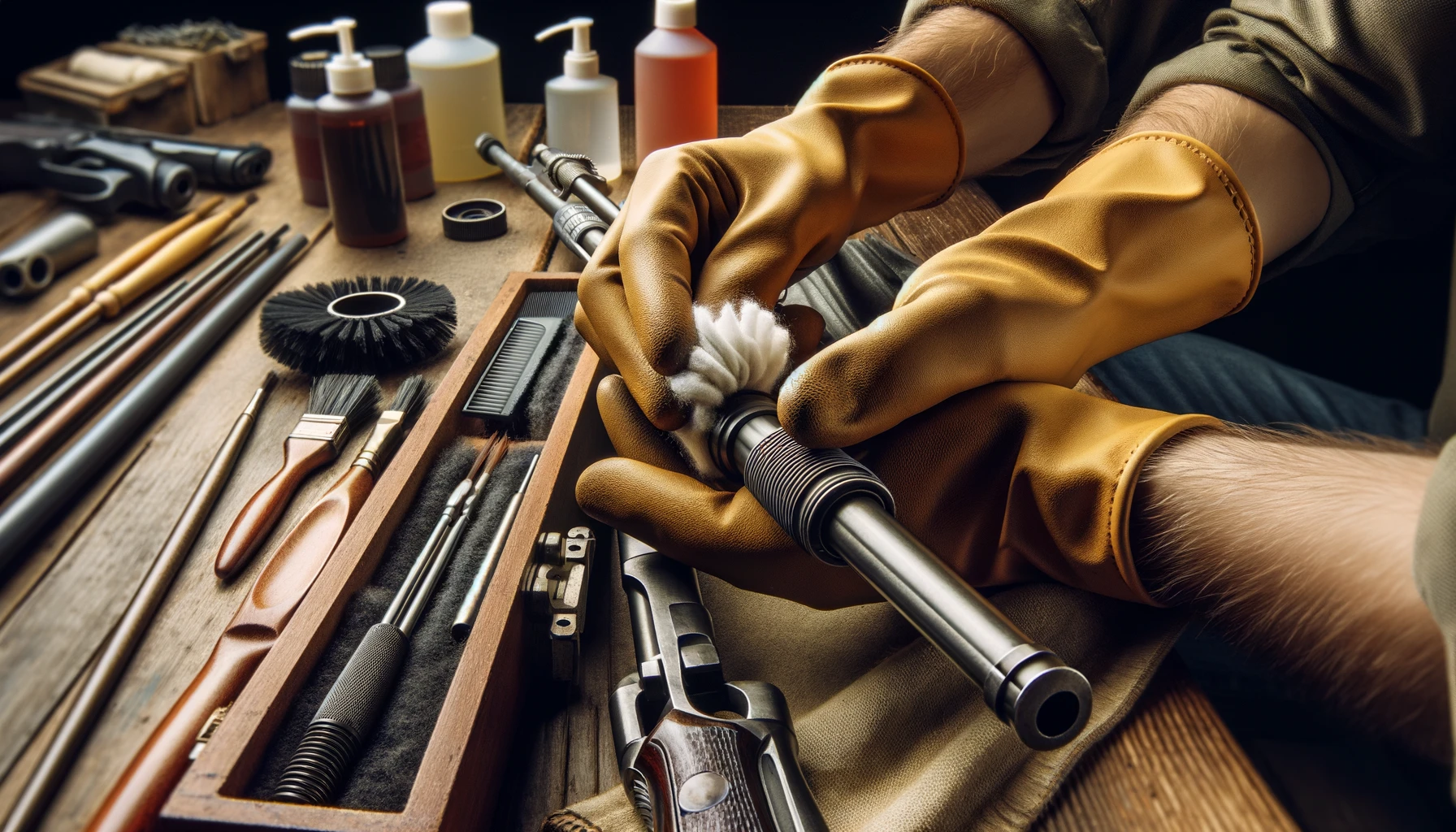
Proper maintenance of your firearm is essential for its performance, longevity, and most importantly, safety. A properly clean gun barrel is crucial for accuracy and reliability. This comprehensive guide will walk you through each step of cleaning your gun barrel, ensuring that you do it effectively, safely, and without causing any damage to your firearm.
Table of Contents
Every gun owner must understand the importance of regular cleaning and maintenance. A dirty barrel can lead to decreased accuracy, misfires, and in extreme cases, barrel obstruction. Regular cleaning removes residue and contaminants, ensuring your gun operates as intended every time you pull the trigger.
To begin, gather all the necessary tools and materials. This will make the process more efficient and prevent any damage to your gun.
You’ll need a cleaning rod long enough to reach the entire length of your barrel. Brushes should be the correct caliber or gauge for your firearm. Bronze brushes are great for general cleaning, while nylon brushes are softer and suitable for light cleaning.
Choose a solvent that is designed to dissolve gunpowder residue, lead, and copper fouling. For lubricants, select a quality gun oil or grease. These products protect metal surfaces from rust and reduce wear by providing a thin lubrication layer.
Always ensure that your firearm is unloaded before beginning any cleaning process. Double-check the chamber, receiver, and magazine to make sure they are clear of ammunition.
Choose a well-ventilated area with a large, flat surface. Cover the surface with a mat or newspapers to protect it from solvents and oils. Have all your tools and materials within reach to streamline the cleaning process.
Before cleaning, inspect your barrel for signs of fouling, rust, or pitting. A flashlight or bore light can help you see inside the barrel. Look for any irregularities or deposits that might affect your gun’s performance.
Soak a patch in solvent and attach it to your cleaning rod. Pass it through the barrel several times to loosen and dissolve fouling. Let the solvent sit for the amount of time recommended by the manufacturer to break down deposits effectively.
After the solvent has done its work, attach the correct size brush to your cleaning rod and scrub the inside of the barrel. This will help remove any loosened residue. Be sure to scrub thoroughly but gently, as harsh scrubbing can damage the barrel.
Next, run dry patches through the barrel until they come out clean. This removes any remaining solvent and residue. Finish by running a patch lightly coated in lubricant through the barrel to protect it from rust.
Select a lubricant designed for firearms. These usually offer protection against rust and corrosion and can withstand the high temperatures generated by shooting.
Apply a small amount of lubricant to a clean patch and run it through the barrel. This leaves a thin protective layer inside the barrel. Be careful not to over-lubricate, as this can attract dirt and debris.
For tough deposits, consider using a bore snake or specialized cleaning tools like a chamber brush or a dental pick for hard-to-reach areas. Always follow the manufacturer’s instructions when using these tools.
The frequency of cleaning depends on how often you use your firearm and the conditions in which you use and store it. A good rule of thumb is to clean your gun after every use and perform a detailed cleaning every few months.
After reassembling your firearm, perform a function check to ensure everything is working correctly. Check the action, safety, and trigger mechanism to ensure they operate smoothly and correctly.
Store your firearm in a cool, dry place to prevent rust and damage. Consider using a dehumidifier in your storage area and always store guns unloaded for safety.
A clean and well-maintained firearm is safer, performs better, and lasts longer. Regular cleaning also gives you a chance to inspect your gun for wear and tear, ensuring that any issues are caught and addressed early. Remember, taking care of your firearm ensures that it will take care of you when you need it.
Q1: How often should I clean my gun barrel?
A1: Properly clean your gun barrel after every use to remove residues and contaminants. Even if not used, clean it thoroughly every few months.
Q2: Can I use household oils for lubricating my gun?
A2: It’s best to use lubricants specifically designed for firearms. They provide better protection and don’t break down under high temperatures.
Q3: What’s the most common mistake people make when cleaning their gun barrel?
A3: One common mistake is over-lubricating, which can attract dirt and cause malfunctions. Use only a thin layer of lubricant.
Q4: How do I know if my cleaning rod is the right size?
A4: Your cleaning rod should fit comfortably in the barrel without too much wiggle room. Using the wrong size can damage the barrel’s interior.
Q5: Can improper cleaning damage my firearm?
A5: Yes, using abrasive materials or harsh chemicals can damage the barrel. Always use tools and cleaners designed for firearms and follow the manufacturer’s instructions.
By adhering to this detailed guide, you’re not just cleaning your gun; you’re ensuring its reliability, safety, and longevity. Take pride in maintaining your firearm—it’s a practice that pays off in performance and peace of mind.
When handling any firearm whether it’s a hunting rifle, shotgun, handgun, or even a crossbow—reliability…
Jerking the trigger is one of the most common accuracy problems pistol shooters face. Whether…
Keeping your handgun clean is one of the most important responsibilities you have as a…
Archery has evolved dramatically over thousands of years, yet one debate continues to spark curiosity…
When you’re setting up a long-range rifle scope, one of the most important decisions you’ll…
For many shooters, the objective lens size is one of the first things they look…
This website uses cookies.